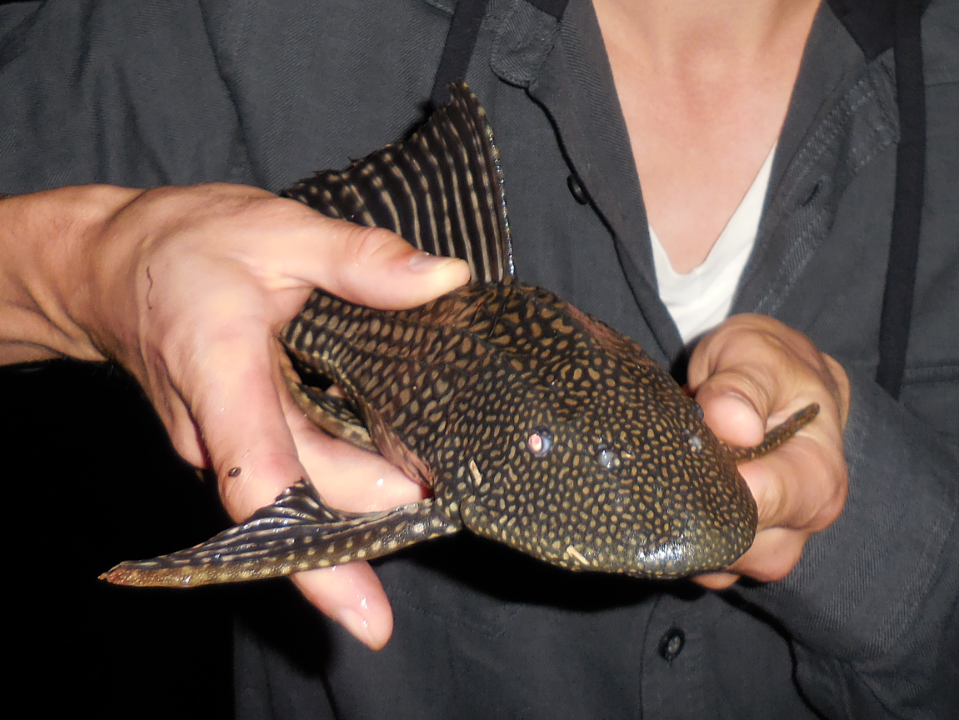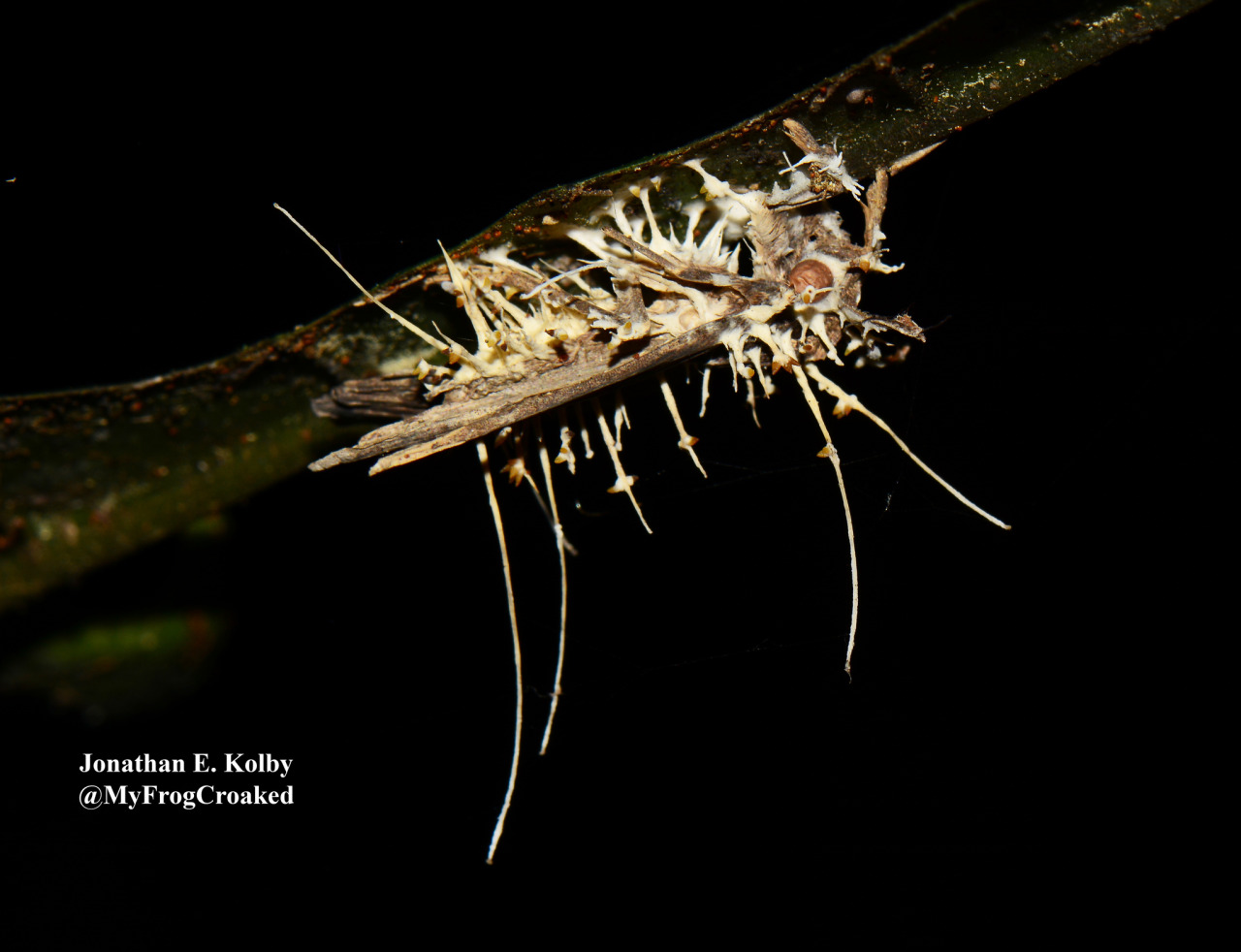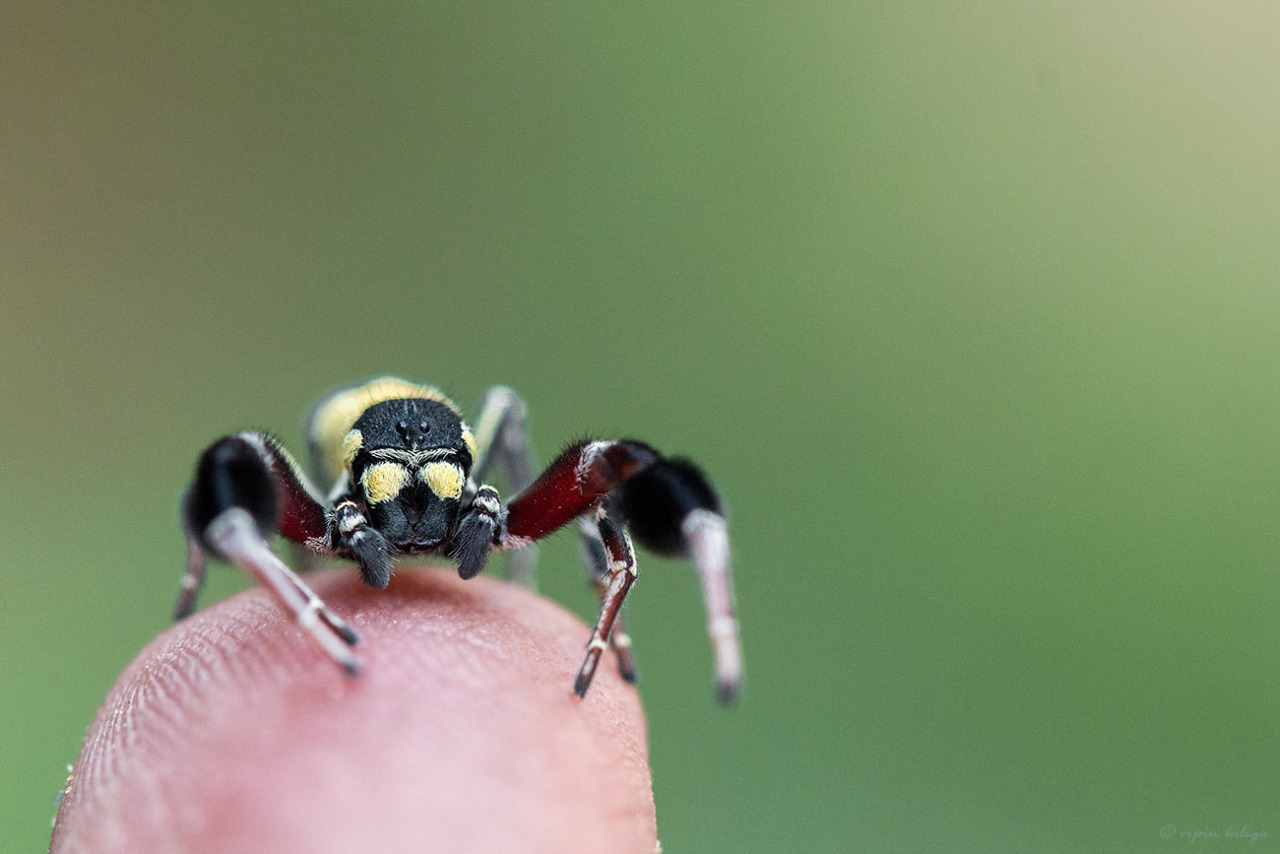Observation of the Week, 3/1/2016

This Snow King Pleco seen by elliot403 in Florida is our Observation of the Week.
It was Ray-finned Fishes Week on iNaturalist last week, and elliot403 posted this huge Snow King Pleco catfish, which he managed to catch barehanded!
Growing up in Calgary, Alberta, Elliot Lindsay explored his backyard to look for “bugs and other creepy crawlies,” and spent time fishing and playing in the woods and in the foothills of the Rocky Mountains. His love for the outdoors, and especially fish and riparian zones, never left him, and he’s focused on “native salmonid conservation, and bioengineering and riparian enhancement” nowadays, although he also has several years of experience working in the aquarium trade.
It was this experience that helped Elliot recognize a plecostomus catfish while he was vacationing in Florida. He spotted it in the dark, feeding on plants, and says “I came by later on with a flashlight and was able to catch it with my hands, I was really excited, being from chilly Canada it seemed surreal to see a plecostomus living anywhere other than a fish tank.”
The aquarium trade is the likely reason that Snow King Plecos and their plecostamus brethren have now become naturalized in Florida waterways and in many places around the world. Originally from South and Central America, these fish belong to the Loricariidae family of bony-plated catfish, and are commonly put in aquariums to clean algae from the rocks and substrate. However, these fish can quickly grow large (up to 24” (61 cm) in length) and are often released into the wild by overwhelmed aquarists. In places where they have introduced, plecostomus catfish can compete with native fish for food and resources, and they also dig burrows in embankments, which can possibly create more erosion and silting issues. In Florida they have also been observed cleaning algae from the skin of manatees - as of now it is unknown what affect this has on the manatees.

Elliot is a recent member of the iNaturalist community and says “using iNaturalist has furthered my data collection/mapping obsession, I love being able to browse around and see what people are finding in the city and in rural areas.” He plans on adding many more observations, especially fish, invertebrates and plants, once spring returns in Canada.
- by Tony Iwane
- Have you seen an invasive catfish in US waters? There’s an iNaturalist project for that.










